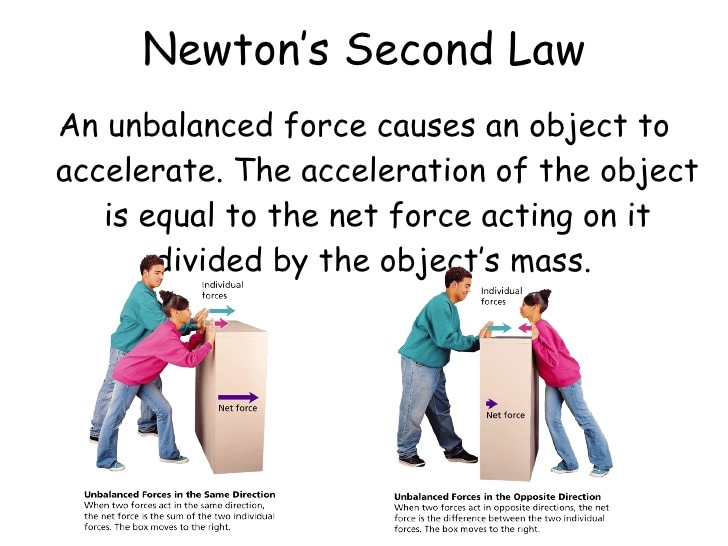

A trolley experiences an acceleration when an external force is applied to it. Ĭalculate the force needed to accelerate a 15 kg gazelle at 10 m/s 2. Investigating Newtons second law of motion. ExampleĬalculate the force needed to accelerate a 22 kg cheetah at 15 m/s 2. Inertial mass is a measure of how difficult it is to change the velocity of an object. The ratio of force over acceleration is called inertial mass. In other words, the acceleration of an object increases if the resultant force on it increases, and decreases if the mass of the object increases.
SECOND LAW OF MOTION FULL
If you try to ride each bicycle and you push on the pedals with the exact same strength, you will be able to accelerate the bike with the empty basket MORE than the bike with the basket full of bricks. Say you have two identical bicycles that each have a basket.

Newton’s Second Law also says that the greater the mass of the object being accelerated, the greater the amount of force needed to accelerate the object. You are increasing the speed of the bicycle by applying force to the pedals. When you push on the pedals, your bicycle accelerates. Your leg muscles pushing pushing on the pedals of your bicycle is the force. That doesnt necessarily mean the object is at rest, but it means that the velocity is constant. Riding your bicycle is a good example of this law of motion at work. Newtons first law says that if the net force on an object is zero ( Sigma F0 F 0 ), then that object will have zero acceleration. Newton’s Second Law of Motion says that acceleration (gaining speed) happens when a force acts on a mass (object). Consequently, the principles are referred to today by his name – Newton’s First, Second and Third Law of Motion. Newton is best known for three important principles of physics that describe how things move. When the mass is measured in kilograms and the acceleration is. LAW II: The alteration of motion is ever proportional to the motive force impressed and is made in the direction of the right line in which that force is.

He lived just before the American Revolution. In this equation, F is the force, m is the mass, and a is the acceleration. Newtons second law of motion states that the force exerted by a body is directly. Our Force simulation is now available with a Concept Checker. Dragging this hot-spot allows you to change the size of iFrame to whatever dimensions you prefer. There is a second hot-spot in the lower-right corner of the iFrame. This was around the time of the early colonization of North America. State and explain Newtons second law of motion. Use the Escape key on a keyboard (or comparable method) to exit from full-screen mode. Sir Isaac Newton was an English scientist. Sunday Hours, Closings & Service InterruptionsĠ3/08/23 Homework Help, Science Experiments In Newtons second law of motion, Newton stated that when the net force acting on an object is not equal to zero, then the object would move in a constant acceleration (or deceleration) such that.


 0 kommentar(er)
0 kommentar(er)
